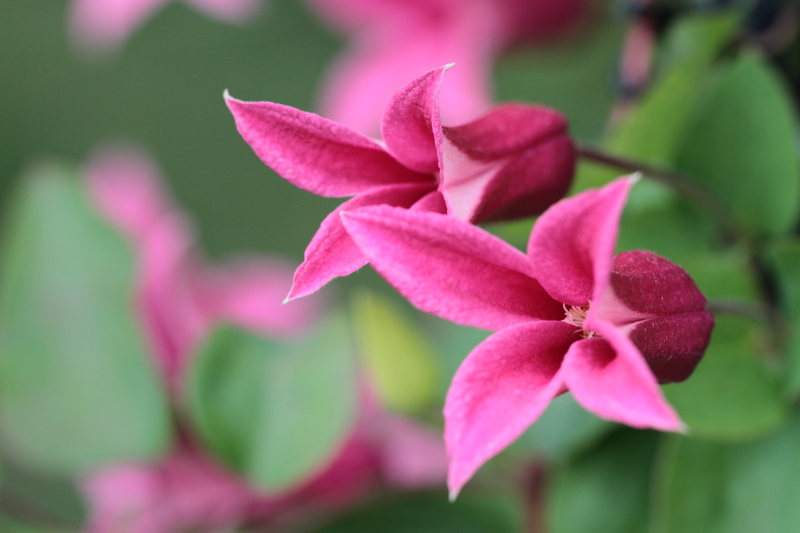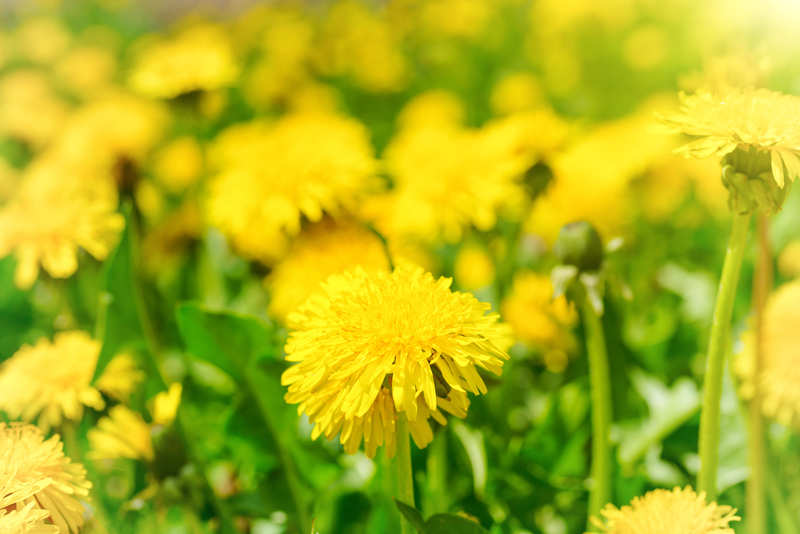Creating the Perfect Environment for Orchids
Posted on 13/06/2025
Creating the Perfect Environment for Orchids
Are you captivated by the elegance and exotic allure of orchids? These beautiful and diverse plants are well-known for their stunning flowers and can make any indoor or outdoor space look enchanting. However, growing orchids successfully requires more than just watering them occasionally. In this comprehensive guide on creating the perfect environment for orchids, you'll learn everything you need to know to help your cherished plants thrive, from selecting the ideal orchid habitat to understanding their unique care requirements.
Understanding Orchid Needs: The Foundation for Success
Before diving into the specifics of how to create the optimal environment for orchids, let's briefly review why orchids need specialized care. Unlike typical houseplants, many orchids are epiphytes (air plants) that grow on trees in tropical rainforests, while others are terrestrial, thriving on the forest floor. Their natural habitats are humid, warm, and well-drained, which provides key insights into how to recreate such conditions in your home or garden.
The Most Important Factors for Orchid Growth
- Light
- Humidity
- Temperature
- Air Circulation
- Watering and Drainage
- Soil and Potting Medium
- Feeding and Fertilization
Let's explore each of these factors in detail to ensure you're creating the ideal environment for orchid growth.

Light: Striking the Perfect Balance
Proper lighting is crucial when establishing optimal conditions for orchids. Orchids thrive in bright, filtered light, much like the dappled sunlight beneath a rainforest canopy. Too little light can hamper flowering, while too much direct sunlight can scorch delicate leaves.
Understanding Orchid Light Requirements
- Phalaenopsis (Moth Orchids): Prefer medium to low indirect light.
- Cattleya: Require brighter, but still filtered, sunlight.
- Vanda: Thrive in very bright light, but benefit from protection from harsh midday sun.
- Dendrobium: Like bright light, but not direct exposure.
Tips for Perfect Orchid Lighting
- Place orchids near an east- or west-facing window with sheer curtains for filtered sunlight.
- Rotate pots periodically for even growth.
- If you lack sufficient natural light, use grow lights with full spectrum bulbs designed for orchids.
- Watch leaf color: healthy green with a slight yellow tint suggests optimal light, while dark green indicates insufficient light.
Humidity: Key to Vibrant, Thriving Orchids
Most orchids hail from humid climates, making high humidity essential for orchid health. Aim for 50-70% humidity to mimic their natural surroundings.
Creating a Humid Orchid Habitat
- Use a humidity tray: Fill a tray with water and pebbles, setting your orchid pots on top (not letting roots sit in water).
- Mist leaves regularly, especially in drier environments.
- Consider using a room humidifier or grouping plants together to increase moisture levels naturally.
- Regularly monitor humidity with a hygrometer.
*Note: Ensure there's enough air circulation to prevent fungal diseases in your moist orchid environment.
Temperature: Maintaining the Ideal Orchid Climate
Temperature is another critical factor in cultivating the perfect environment for orchids. Fortunately, most common orchids fit comfortably within typical indoor temperature ranges, though they prefer a marked difference between day and night temperatures.
Optimal Orchid Temperature Ranges
- Daytime: 65-80?F (18-27?C)
- Nighttime: 55-65?F (13-18?C)
- A 10-15?F (5-8?C) night-to-day temperature drop stimulates flowering in many orchid species.
If your home is very warm or cool, consider moving orchids to locations that experience the necessary temperature fluctuations. Avoid placing them near heat vents, air conditioning units, or drafty windows.
Air Circulation: Freshness for Healthy Orchids
A well-ventilated environment is vital for preventing mold and diseases. In the orchid's natural habitat, gentle breezes continuously refresh stagnant air. Recreate this by:
- Using a small oscillating fan set on a gentle setting.
- Placing orchids in rooms where air circulates freely, but avoiding direct cold or hot drafts.
Watering and Drainage: Avoiding the #1 Orchid Killers
Improper watering is a common mistake many orchid growers make. Orchids like to be moist but not soggy. Overwatering easily leads to root rot, while underwatering can dehydrate them.
Best Watering Practices to Create the Perfect Orchid Environment
- Water orchids in the morning to allow leaves to dry by nightfall.
- Use lukewarm, distilled, or rainwater whenever possible, as tap water may contain salts and chemicals that damage orchids.
- Allow the potting medium to dry out slightly between waterings; check with your finger or a wooden skewer.
- Never leave orchids sitting in water; make sure pots have drainage holes.
- Watering frequency varies by season, room conditions, and orchid species. Generally, once every 5-7 days is sufficient.
*Tip: When in doubt, it's better to underwater than overwater orchids. Signs of inadequate watering include shriveled leaves and soft, limp roots.
Soil and Potting: Mimicking the Orchid's Natural World
Choosing the right potting mix is crucial for creating an environment where orchids can thrive. Don't use ordinary garden soil, as it can suffocate roots and hold excess moisture.
Recommended Orchid Potting Media
- Bark chips (fir or pine): Excellent for epiphytic orchids like Phalaenopsis and Cattleya.
- Sphagnum moss: Retains more moisture, suitable for orchids requiring higher humidity.
- Coconut husk chips or perlite: Improve drainage and aeration.
- Charcoal: Helps prevent odor and retains nutrients.
Repotting every 1-2 years is recommended to keep the orchid-friendly habitat clean and provide fresh nutrients.
Feeding and Fertilization: Nutrition for Optimal Orchid Growth
Regular feeding enhances orchid health and flower production. Use a balanced fertilizer specifically designed for orchids. The "weakly, weekly" method--applying diluted fertilizer at quarter strength each week--is popular among experienced orchid growers.
Tips for Feeding Orchids Effectively
- Use a balanced '20-20-20' orchid fertilizer or one suited for your specific orchid species.
- Flush the potting medium with clear water monthly to remove salt buildup.
- Withhold fertilizer during winter or dormant periods unless your orchid is actively growing.
Environment Enhancements: Tricks for Lush Orchid Displays
With the basics covered, you can create an even more perfect environment for orchids by implementing small enhancements:
- Orchid terrariums or glass cases to control humidity and temperature for miniature species.
- Decorative bark and stones around pots not only look attractive but help retain local moisture.
- Hygrometers and light meters provide continuous insight into the growing conditions and help you make informed adjustments.
Common Problems When Creating the Ideal Orchid Environment (and How to Solve Them)
Even the most attentive orchid growers encounter challenges. Here's how to spot and fix common mistakes:
- Leaf yellowing: Often caused by too much direct sunlight or overwatering.
- Brown leaf tips: Typically from low humidity or salt buildup. Increase humidity and flush potting mix regularly.
- Drooping buds: May result from insufficient water or light during bud formation.
- Mold or fungal growth: Indicates poor air circulation. Use fans and cut back on misting.
- No blooms: Usually due to insufficient light, improper fertilization, or lack of a day/night temperature drop.
If you follow the guidelines in this article, you'll significantly reduce such risks, crafting a perfect orchid habitat for happy, healthy plants.
Inspiring Orchid Display Ideas for Your Home
Once you've established the perfect orchid environment, display your plants with pride! Here are some creative ideas:
- Hang miniature orchids in glass globes in bright bathrooms, where humidity is naturally higher.
- Arrange different orchid species at varying heights on a dedicated shelf near a sunny window.
- Create an indoor orchid garden by grouping several varieties with ferns and moss in a glass case.
- Place a single, dramatic orchid as a table centerpiece.

Frequently Asked Questions About Orchid Care and the Ideal Environment
How do I know if my orchid is getting the right amount of light?
Monitor leaf color and growth. Healthy orchids generally have light to medium green leaves. Too dark means not enough light, while yellowish or red-tinted leaves suggest too much direct sun.
What's the best pot for orchids?
Choose a pot with plenty of drainage holes. Clear plastic pots allow you to see root health and monitor moisture, while clay orchid pots offer good breathability.
Can I grow orchids outdoors?
In warm, humid climates, many orchids thrive outdoors in shaded, protected spots. Just be sure to bring them indoors if temperatures drop below their comfort zone.
How often should I repot my orchid?
Every 1-2 years is ideal. Repot sooner if the potting medium breaks down, roots outgrow the container, or you notice declining health.
Conclusion: Cultivating the Perfect Orchid Environment is Achievable
With a thorough understanding of orchid care essentials--including light, humidity, temperature, air movement, and proper watering--you can easily craft the ideal environment for your orchids at home. Remember, each orchid variety may need some adjustments, so observe your plants closely, learn from their signals, and don't be afraid to experiment.
By applying the techniques in this guide, you'll soon enjoy vibrant, healthy orchids that reward you with breathtaking blooms year after year. Happy growing!

